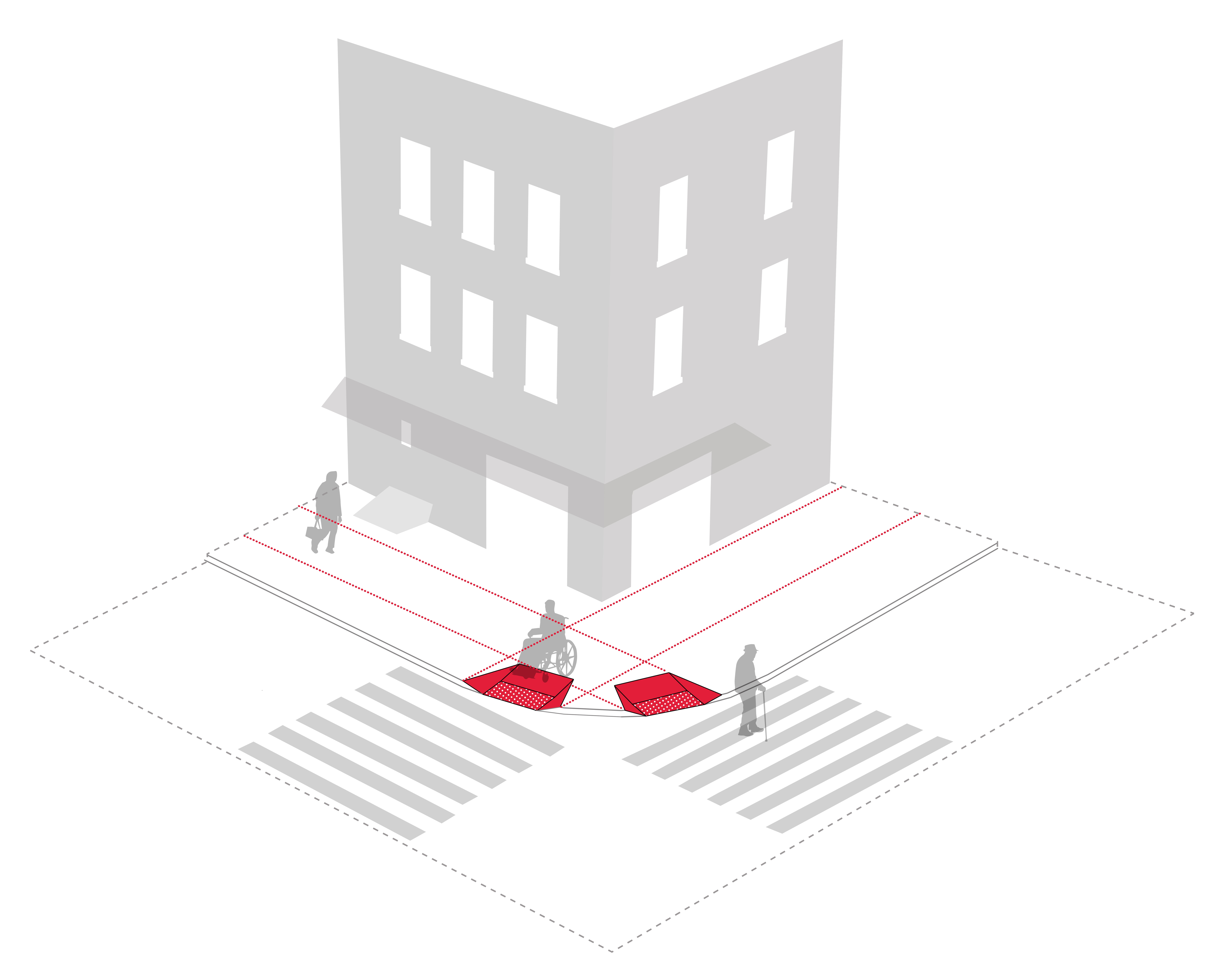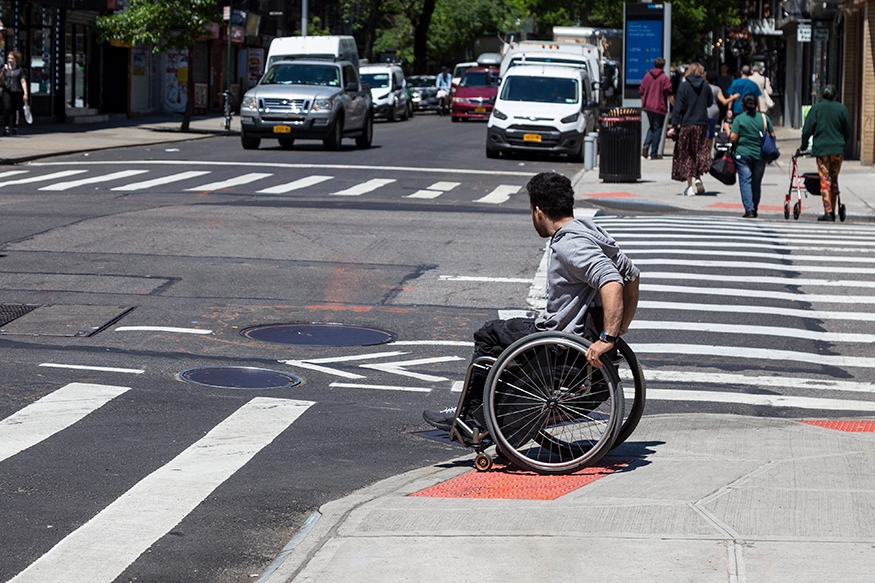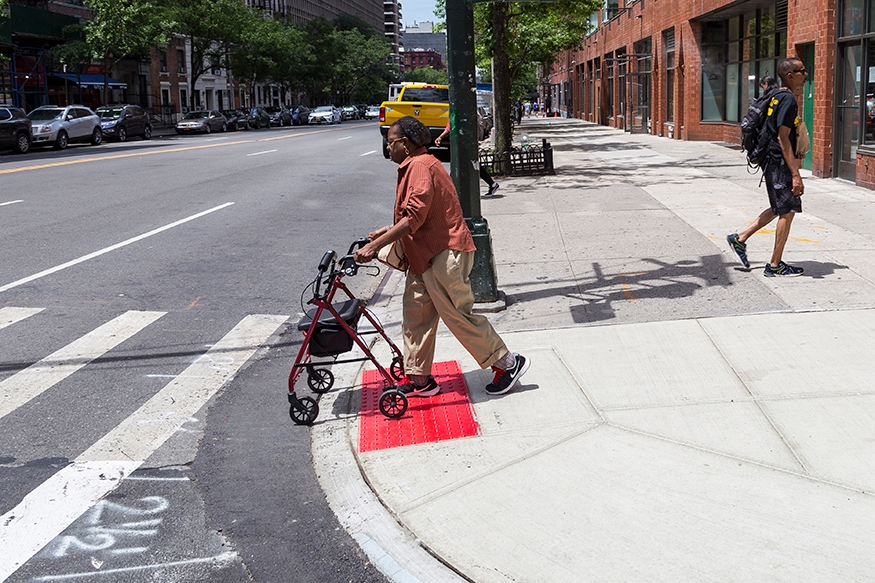Usage: Wide
Pedestrian ramps are a critical component in providing safe and accessible means of travel. Pedestrian ramps provide access on and off streets and sidewalks and are an essential tool for all pedestrians, particularly the aging population and people with ambulatory and vision disabilities. Ramps are required to include a color-contrasting detectable warning surface to communicate boundaries between pedestrian and vehicular paths and unprotected drop-offs to pedestrians who have vision disabilities.


2nd Avenue, Manhattan

96th Street, Manhattan
Benefits
- Maintains an accessible path of travel for pedestrians with mobility impairments and those with strollers or other wheeled devices
- Provides visual and tactile cue for pedestrians with vision disabilities when entering or exiting pedestrian space
Considerations
- Pedestrian ramps are needed wherever a sidewalk or other pedestrian walkway crosses a curb
- Any alteration triggers the obligation to provide ADA-compliant ramps to the maximum extent feasible
- Perpendicular pedestrian ramps are preferred over apex or diagonal ramps, which require approval prior to their installation
Application
- At all corners where pedestrian walkways exist, including medians and mid-block crossings
- Not required at raised intersections, though detectable warning surfaces must still be used
Design
- The design and construction of a pedestrian ramp must follow the 2010 ADA Standards for Accessible Design, local rules and specification bulletins, or other best practice guidelines found in the Public Right of Way Accessibility Guidelines
- If the minimum design standards cannot be met, coordinate with DOT to demonstrate and document alternative designs in cases where it is structurally impracticable or technically infeasible to provide a fully ADA-compliant pedestrian ramp (See DOT's Ped Ramp Program page for construction forms)
- Detectable warning surfaces should be red when adjoining light-colored sidewalks, such as Unpigmented Concrete. Detectable warning surfaces should be bright white when adjoining dark-colored surfaces, such as Pigmented Concrete, Asphalt Pavers, or Bluestone


